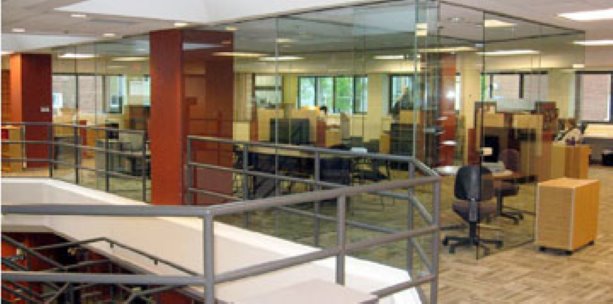When OXFAM Canada wanted a tired old building transformed into modern, eco-friendly office space, BuildGreen Solutions found itself facing a shoestring budget, a tight timeline, and high expectations.
When OXFAM Canada wanted a tired old building transformed into modern, eco-friendly office space, BuildGreen Solutions found itself facing a shoestring budget, a tight timeline, and high expectations.
BuildGreen had worked on several new green buildings, but considerably fewer retrofits. And now a client, presenting a building in Ottawa dating back to the 1950s, was asking for LEED Platinum environmental attributes and a move-in date within a year — all for $100 a square foot.
“It was incredibly energy-inefficient, the roof was leaky, and it was dark inside,” Rodney Wilts, a partner with BuildGreen, recalled at the Green Building Conference, held as part of Construct Canada in Toronto.
BuildGreen, an arm of Windmill Developments, said OXFAM wanted environmental, economic and social elements considered in tandem and knew it would have to completely gut the interior and re-do the roof.
The first step was to assemble the bodies. The project team included CSV Architects, Turnbull Design Consultants (interior design), Arborus Consulting (commissioning), Genivar (engineering), and Pranger-DeBruyn Construction (general contractor).
BuildGreen took an integrated design approach to ensure a shared vision of sustainability. A charette-style workshop and building walk-throughs, followed by weekly meetings, got things moving.
Often, green retrofits are limited to single items such as boilers, insulation or lighting, done piecemeal. However, Wilts said an aggregate, holistic approach produces more meaningful results.
“Indoor air quality, waste management, renewable energy opportunities, emissions offsets and water conservation are all important. If you’re truly interested in achieving sustainability, you need to look at these as a package deal.”
Containing costs required effort and innovation. For workstations and other furniture, BuildGreen found a local millwork shop that had access to affordable wood certified as eco-friendly by the Forestry Stewardship Council.
In all, Wilts said, 90 percent of the wood the project used was FSC-certified.
Work crews also went into salvage mode, storing materials like acoustic panels for reuse rather than buying new. Decorative pieces of glass embedded into cubicle walls were turned into dividers suitable for the open-space concept OXFAM wanted.
These kinds of efforts diverted 80 per cent of construction waste from landfill, Wilts said.
The project also required attention to detail, such as insulating gaps around windows. “You can buy the best windows in the world, but if there’s a big gap around them, the air is just going to go around,” Wilts said.
BuildGreen even tested for electromagnetic field (EMF) radiation.
“There’s great debate over this,” Wilts explained. “Some people feel this is the next huge environmental hazard…other people aren’t worried about it.”
Luckily, testing proved inexpensive. Crews learned one small area exceeded recommended exposure levels and adjusted the floor plan so the space would be used for functions that do not keep people there continuously.
Post-occupancy utility monitoring continues, but Wilts said BuildGreen expects bills will be up to half what they would otherwise be without the retrofit. Potable water consumption is reduced thanks to highly efficient fixtures.
Wilts said green retrofits pose some challenges. Buildings are often occupied, even in the evening, and moving large materials around can be tough.
Until the demolition is complete, there’s always the possibility of surprise. Luckily, nothing significant turned up in this case, but structural flaws can sometimes mean revisiting best-laid plans.
And, because the green retrofit industry is new, there’s a relative shortage of experienced tradespeople.
“We’re facing a continuous education process,” Wilts said.
While the vast majority of LEED projects are new buildings, Wilts said he’d like to see more green retrofits because, done properly, they can turn old energy hogs into economically competitive and environmentally sound buildings.
“If we really want to be serious about sustainability we need to get to the existing stock,” he said.
Citing an industry study that showed that green retrofits are beginning to catch up to new green constructions, Wilts said green buildings now comprise roughly five to nine percent of the retrofit and renovation marketing activity.
“It’s hard to quantify what’s green versus not green, but that’s a rough estimate, and it’s projected to grow to 20 to 30 per cent in just five years.”

Oxfam Canada's office before retrofit











Recent Comments
comments for this post are closed